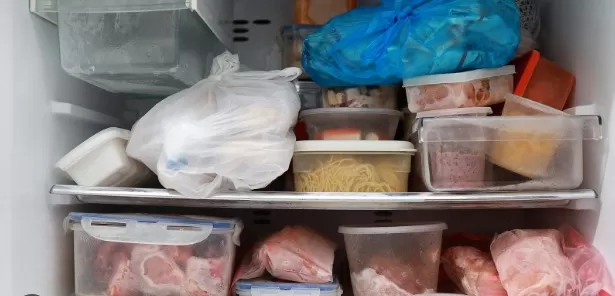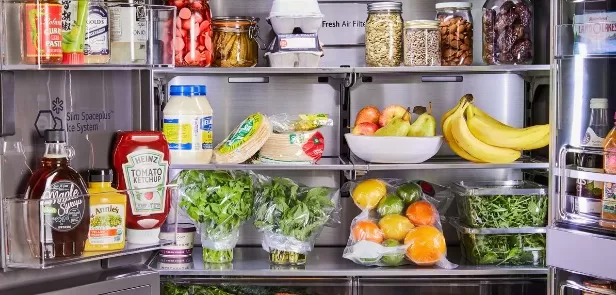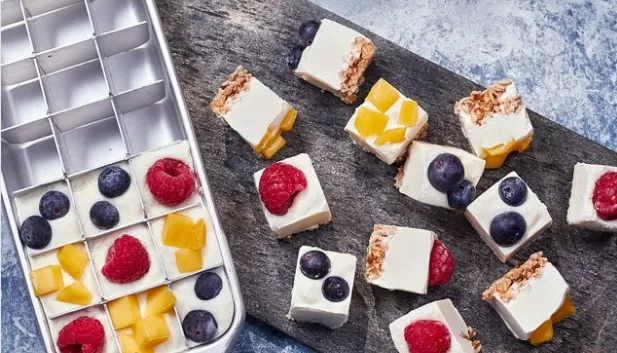Explore the surprising capabilities of your freezer. Discover unconventional uses, such as extending battery life and refreshing clothes, that go beyond storing food. Unleash the hidden potential of this versatile appliance in your home.
Powerful Preservation: Extend the Lifespan of Your Batteries with Freezing

While it’s true that freezing certain types of batteries can help prolong their lifespan, it’s important to note that this method is not suitable for all battery types.
Here’s some information on freezing batteries for storage:.
Nickel-Metal Hydride (NiMH) and Nickel-Cadmium (NiCd) Batteries:.
NiMH and NiCd batteries can benefit from freezing if they are not going to be used for an extended period.
Freezing these batteries can slow down the self-discharge rate and help preserve their charge.
Before freezing, make sure the batteries are fully charged, as freezing partially discharged batteries can lead to crystallization and potential damage.
Place the batteries in a sealed zip-lock bag to protect them from moisture. Alkaline Batteries:.
Alkaline batteries, such as AA or AAA batteries, do not benefit significantly from freezing.
Storing alkaline batteries in a cool, dry place is generally sufficient for maintaining their shelf life.
Extreme cold temperatures can cause alkaline batteries to discharge more rapidly when in use, so it’s not recommended to freeze them for regular storage.
General Tips for Battery Storage:.
Temperature and Humidity:.
Store batteries in a cool and dry environment, away from direct sunlight and extreme temperatures.
High temperatures can cause batteries to deteriorate, while excessive humidity can lead to corrosion.
Battery Types:.
Different battery chemistries have specific storage requirements.
Always refer to the manufacturer’s guidelines for optimal storage conditions.
Battery Charge Levels:.
Before storing rechargeable batteries, ensure they are adequately charged.
Partially discharged batteries may self-discharge further over time.
Proper Packaging:.
When storing batteries, consider using a sealed zip-lock bag or a battery storage container to protect them from moisture and potential short circuits.
Regular Rotation:.
If you have multiple batteries in storage, practice regular rotation to ensure you use older batteries first and maintain a fresh supply.
Chill and Conserve: Freeze Candles for Longer Burn Time
While it’s true that placing candles in the freezer can slow down their burn rate, it’s important to note that this method may not significantly extend the overall life of the candle.
Here’s some information about freezing candles:.
Cooling the Wax:.
Freezing candles can help harden the wax, making it burn more slowly and evenly when lit.
This technique is especially useful for tapers and thinner candles that tend to burn quickly. Preparation:.
Before placing a candle in the freezer, ensure it is well-wrapped or placed in a sealed container to protect it from moisture and odors.
Avoid placing candles directly in contact with food items in the freezer. Timeframe:.
It is generally recommended to freeze candles for at least a few hours or overnight to allow the wax to harden adequately.
Burn Time:.
While freezing can slow down the burn rate, it may not significantly extend the overall life of the candle.
Other factors like the quality of the wax, wick, and candle design can also affect burn time. Storage Considerations:.
When storing candles for an extended period, it’s generally best to keep them in a cool, dry place away from direct sunlight.
Ensure the candles are stored upright to prevent warping or bending of the wick. It’s important to note that freezing candles may not work as effectively for all types of candles or candle compositions.
Some candles, such as soy-based or highly fragranced candles, may not respond to freezing in the same way as traditional wax candles. Additionally, freezing candles repeatedly may impact their overall quality and performance.
If you’re looking to maximize the burn time and lifespan of your candles, here are some general tips:.
Trim the wick to ¼ inch before each lighting to promote a clean and even burn.
Avoid placing candles in drafty areas to prevent uneven burning and excessive wax consumption. Allow candles to burn long enough during each use to create a wide melt pool across the entire surface to prevent tunneling.
Extinguish candles after a few hours of burning to avoid overheating and prolong their overall lifespan. Remember to always follow proper candle safety guidelines, never leave a burning candle unattended, and keep them away from flammable objects or materials.
Culinary Cubes: Freeze Wine, Broth, and More for Flavorful Convenience

Using ice-cube trays to freeze leftover wine, broth, fruit juices, tomato sauce, and coffee is a practical and convenient way to repurpose these ingredients for future use.
Here are some key points to consider:.
Wine Cubes:.
Pour any leftover wine into a plastic ice-cube tray and freeze.
When a recipe calls for wine, simply add a frozen wine cube or two. This method prevents wasting wine and allows for easy portioning.
Broth, Fruit Juices, Tomato Sauce, and Coffee Cubes:.
Similar to wine, you can freeze leftover broth, fruit juices, tomato sauce, and coffee in ice-cube trays.
Once frozen, transfer the cubes to a freezer bag or container for long-term storage. Use the cubes in recipes that call for small amounts of these ingredients, allowing for easy portion control.
Herb Cubes:.
Chop up fresh herbs and place them in ice-cube trays.
Fill the trays with water or oil to cover the herbs. Freeze the trays, and once the cubes are solid, transfer them to a freezer bag or container.
When cooking, add the herb cubes directly to your skillet or saucepan to melt the ice and infuse your dishes with fresh herb flavors. By freezing these ingredients into cubes, you can conveniently add them to your recipes without having to open new containers or worry about wastage.
It’s a practical way to preserve and utilize leftover ingredients while enhancing the flavors of your dishes. Just be sure to label the freezer bags or containers with the contents and date for easy identification later on.
Denim Refresh: Keep Your Jeans Fresh and Fit with the Freezer Method
Using the freezer to refresh and maintain your jeans is a unique approach that can help preserve their appearance and fit.
Here are the steps to use the freezer method:.
Select a Heavy-Duty Sealable Bag:.
Choose a bag that is large enough to fit your jeans comfortably and can be securely sealed to keep out moisture and odors.
Prepare Your Jeans:.
Make sure your jeans are clean and free from any stains or spills.
Fold or roll the jeans neatly to fit them into the bag without excessive creasing. Seal and Freeze:.
Place the jeans inside the sealable bag and remove as much air as possible before sealing it tightly.
Put the bag with the jeans in the freezer and leave it there for at least a week. Thaw and Air Out:.
After the week is over, remove the bag from the freezer and let it thaw at room temperature.
Once thawed, take the jeans out of the bag and hang them or lay them flat to air out for a few hours. The prolonged exposure to cold temperatures in the freezer helps kill bacteria and eliminate odors that may have built up in the jeans.
It can also help retain the shape and crispness of the denim. Additionally, using the freezer method avoids the potential shrinking that can occur when jeans are dried in a conventional dryer.
However, it’s worth noting that the freezer method may not remove heavy stains or deeply embedded odors.
In such cases, spot cleaning or washing the jeans using appropriate methods is recommended before using the freezer method as a maintenance technique.
Remember to check the care instructions on your jeans to ensure that freezing is suitable for the specific denim fabric and any additional components, such as buttons or embellishments.
Vintage Vigilance: Safeguarding Wooden Treasures with the Freezer Technique

Using the freezer to eliminate woodworms and their eggs from antique wooden items is an interesting approach.
Here’s how you can use the freezer method for this purpose:.
Check the Item:.
Examine the wooden item for any visible signs of woodworm activity, such as small holes or frass (wood dust).
Ensure that the item is suitable for freezing and won’t be damaged by the cold temperatures. Wrap or Bag the Item:.
Wrap the wooden item in a protective covering, such as a plastic bag or wrap, to prevent it from coming into direct contact with the freezer.
Place in the Freezer:.
Find a spot in your freezer where the item can be placed without being damaged or affecting the freezer’s functionality.
Ideally, the item should be kept in the freezer for at least a few weeks to ensure that any woodworms and their eggs are killed. Thaw and Inspect:.
After the designated freezing period is over, remove the wooden item from the freezer and allow it to thaw at room temperature.
Inspect the item for any remaining signs of woodworm activity. If you notice any live insects or fresh holes, further treatment or professional assistance may be necessary.
It’s important to note that the freezer method may not be effective for all types of woodworm infestations. In severe cases or for valuable antique items, it’s recommended to consult with a professional pest control expert or restoration specialist who can provide appropriate treatment options.
Additionally, taking preventive measures such as inspecting and treating wooden items before bringing them into your home can help minimize the risk of woodworm infestations.
Regular cleaning and maintenance of wooden items can also help preserve their condition and prevent future issues.
Remember to always handle antique or valuable items with care and consider their specific requirements and condition before using any Treatment Methods.
*The information is for reference only.